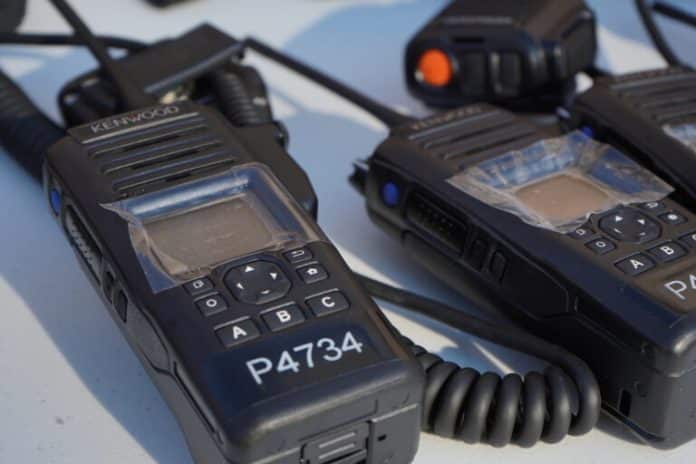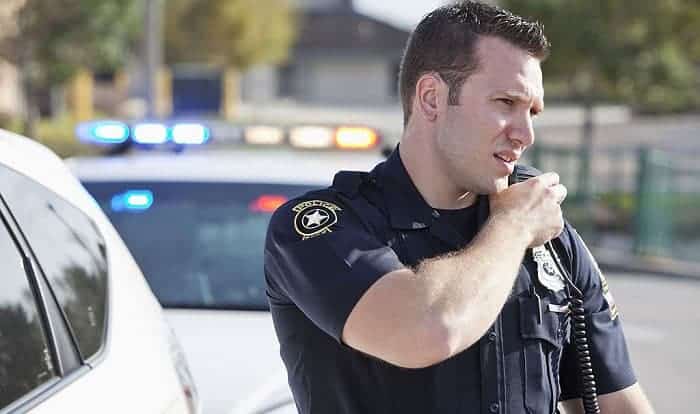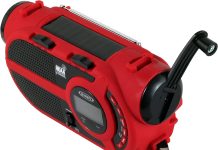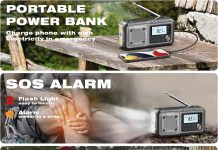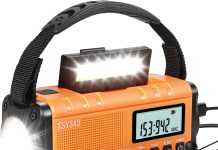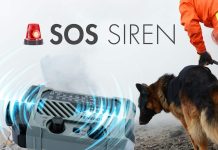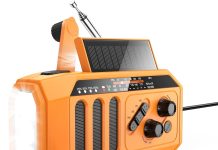You’re curious about the technology behind law enforcement and have wondered, “What radios do US police use?”
The answer to this question is essential in understanding how communication plays a vital role in the effective functioning of the police force.
Radios serve as the lifeline for officers, enabling them to stay connected with their colleagues and dispatchers in real-time, ensuring a prompt response to emergencies and maintaining public safety.
This article will explore the various types of radios used by US police departments, shedding light on their features and importance in modern policing.
Review contents
The Importance of Radios for US Police
Effective communication is crucial for the successful operation of law enforcement agencies, and police radios play a vital role in enabling this communication. By equipping police officers with reliable and efficient radios, various challenges in law enforcement can be addressed, making them an indispensable tool for police departments across the United States.
Effective Communication
In the world of law enforcement, effective communication is of paramount importance. Police officers rely on radios to relay critical information instantly and efficiently to their colleagues, supervisors, and dispatchers. This real-time communication allows officers to coordinate their actions and respond promptly to emergencies, ensuring public safety and efficient law enforcement.
Emergency Situations
During emergencies, such as natural disasters or active shooter incidents, police radios become an invaluable lifeline for officers and other emergency responders. The ability to quickly communicate and share essential information is crucial for coordinating resources, implementing effective response strategies, and safeguarding the lives of law enforcement personnel and the public.
Coordinating Operations
Law enforcement agencies often work in teams or conduct joint operations with other agencies. In such scenarios, seamless coordination is vital. Police radios allow officers to communicate with one another across departments, ensuring efficient collaboration and task allocation. Whether coordinating a pursuit, establishing perimeters, or handling a hostage situation, effective communication facilitated by radios is essential for successful law enforcement operations.
Types of Radios Used by US Police
A variety of radios are used by police departments throughout the United States. These radios can be broadly classified into three categories: analog radios, digital radios, and trunked radio systems. Each type offers unique features and capabilities tailored to law enforcement professionals’ specific needs.
Analog Radios
Analog radios have been a staple in police communications for several decades. These radios transmit and receive analog signals, allowing officers to communicate over specific frequencies. They are typically used by smaller police departments or in areas where infrastructure for digital communication is limited.
Conventional Analog Radios
Conventional analog radios operate on a single channel simultaneously, requiring officers to take turns speaking and listening. While these radios are relatively simple to use, their limited functionality and lack of advanced features make them less popular than their digital counterparts.
Simplex and Duplex Systems
Analog radios can function in either simplex or duplex systems. In a simplex system, radios operate on the same frequency, allowing two-way communication but requiring one party to speak while the other listens. On the other hand, Duplex systems utilize separate transmitting and receiving frequencies, enabling simultaneous two-way communication.
Limited Features and Interoperability
Analog radios have limited capabilities compared to digital radios. They lack features such as text messaging, GPS tracking, and encryption, which can be crucial in modern law enforcement operations. Additionally, interoperability between analog radio systems can be challenging, as they operate on different frequencies and protocols.
Digital Radios
Digital radios have gained popularity among law enforcement agencies due to their advanced features and improved audio quality. These radios convert voice signals into digital data, enhancing communication capabilities and seamless integration with other digital systems.
Improved Audio Quality and Encryption
Digital radios offer more transparent and more secure communication. The digitized voice signals provide superior audio quality, minimizing background noise and ensuring better clarity even in challenging environments. Additionally, digital radios often have built-in encryption capabilities, safeguarding sensitive information shared over the airwaves.
Enhanced Features and Interoperability
Digital radios come equipped with a wide range of features that enhance the capabilities of law enforcement officers. These features include text messaging, GPS tracking, remote programming, and advanced emergency alert systems. Moreover, digital radios allow for seamless interoperability, enabling officers to communicate across different digital systems effectively and operate jointly with other agencies.
Trunked Radio Systems
Trunked radio systems are advanced communication networks that efficiently utilize the available radio frequencies, ensuring optimal spectrum utilization and facilitating efficient interagency communication.
Efficient Spectrum Utilization
In conventional analog or digital systems, each radio channel is dedicated to a specific frequency, limiting the number of simultaneous conversations. Trunked radio systems utilize trunking algorithms to allocate frequencies dynamically, allowing multiple conversations to occur concurrently on the same set of frequencies. This efficient spectrum utilization ensures that communication channels are not wasted and maximizes the efficiency of radio resources.
Dynamic Channel Allocation
Trunked radio systems dynamically allocate channels as needed. When an officer initiates a call, the system assigns an available channel to the conversation, ensuring efficient use of resources. Once the call ends, the channel is released, making it available for other users. This dynamic channel allocation prevents congestion and provides reliable communication capabilities even in high-traffic situations.
Interagency Communication
Trunked radio systems enable seamless communication between law enforcement agencies within the same jurisdiction. With compatible systems, officers from various departments or agencies can communicate directly, streamlining coordination and response efforts during joint operations. This interoperability enhances efficiency, reduces response time, and improves public safety.
Frequency Bands Used by US Police Radios
US police radios use different frequency bands, each offering advantages and disadvantages suited to varying operating environments and requirements.
VHF (Very High Frequency)
VHF radios operate in the frequency range of 30 MHz to 300 MHz. These radios have a longer wavelength, enabling them to transmit signals over long distances with good penetration through buildings and obstacles. VHF radios are commonly used in rural areas or open spaces where long-range communication is essential.
UHF (Ultra High Frequency)
UHF radios operate in the frequency range of 300 MHz to 3 GHz. They have a shorter wavelength than VHF radios, making them suitable for urban environments with many buildings and obstructions. UHF radios provide better coverage in densely populated areas and are generally more resistant to signal interference.
800 MHz Band
The 800 MHz band is another frequency range used by US police radios. This band offers good coverage in urban and rural areas and is often used for trunked radio systems. However, the 800 MHz band is also susceptible to interference from adjacent public safety or commercial radio systems, requiring careful frequency planning to avoid communication disruptions.
Challenges in Police Radio Communications
While police radios play a vital role in law enforcement operations, they are not without challenges. Several factors can impact the effectiveness of radio communication for police officers.
Interference
Signal interference can disrupt radio communications, causing distorted audio, dropped calls, or complete loss of communication. Interference can come from various sources, including other radio systems, electrical equipment, or natural obstacles. Police departments must use frequency planning, antenna placement, and shielding techniques to minimize interference and ensure reliable communication.
Signal Coverage
Ensuring adequate signal coverage is crucial for effective radio communications. Dead zones or areas with weak signal strength can compromise the ability of officers to transmit and receive messages, leading to delays or disruptions in communication. Police departments must carefully assess their operating areas and deploy repeaters or additional infrastructure to enhance signal coverage and eliminate communication blind spots.
Compatibility with Other Agencies
Given the collaborative nature of law enforcement, it is crucial that different agencies can communicate seamlessly during joint operations. However, compatibility issues can arise when agencies use different radio systems, frequencies, or encryption protocols. Achieving interoperability requires effective coordination, standardization of protocols, and investment in compatible radio systems that can communicate across agency boundaries.
The Transition to Digital Radios
The ongoing evolution of technology has prompted many law enforcement agencies to transition from analog to digital radios. The shift offers numerous benefits and considerations that police departments must evaluate.
Benefits of Digital Radios
Digital radios offer enhanced audio quality, crucial in environments with background noise or challenging acoustic conditions. The improved clarity enables officers to communicate effectively, reducing the chances of misinterpretation and ensuring accurate information exchange.
Digital radios also provide advanced features and capabilities that support modern law enforcement operations. These features include text messaging, GPS tracking, situational awareness applications, and remote programming. By utilizing these functionalities, officers can stay connected, access critical information, and streamline their tasks efficiently.
Furthermore, the encryption capabilities of digital radios enhance the security of communication. Sensitive information transmitted over the airwaves can be protected from unauthorized interception, safeguarding operational strategies and ensuring the privacy of officers and citizens.
Budgetary and Technical Considerations
The transition from analog to digital radios involves budgetary and technical considerations for law enforcement agencies. Upgrading radio systems, acquiring new equipment, and training personnel requires a significant investment. Police departments must carefully assess their financial resources and prioritize the transition based on their operational needs and available funding.
Technical considerations such as compatibility with existing infrastructure, coverage requirements, and integration with other communication systems must also be thoroughly analyzed. Police departments should engage with reputable radio manufacturers and consult with experienced professionals to develop a comprehensive roadmap for the transition to digital radios.
Radio Manufacturers for US Police
Several reputable manufacturers provide radios specifically designed for the unique needs of US police departments. These manufacturers offer a range of products incorporating advanced features, durability, and reliability that meet the demanding requirements of law enforcement professionals.
Motorola Solutions
Motorola Solutions is a leading provider of radio communication solutions for the public safety sector, including law enforcement agencies. Their portfolio includes analog and digital radios that enhance communication and interoperability across agencies.
Kenwood
Kenwood offers a diverse range of public safety radios built to withstand the rigors of law enforcement operations. Their radios are known for their durability, advanced features, and compatibility with various communication systems, making them popular among police departments.
Harris Corporation
Harris Corporation specializes in providing mission-critical communication solutions, including radios for law enforcement agencies. Their products prioritize reliability, advanced technology, and interoperability, ensuring seamless communication in critical situations.
JVCKENWOOD USA
JVCKENWOOD USA offers a comprehensive line of digital radios catering to law enforcement professionals’ specific needs. Their radios are known for their ruggedness, audio clarity, and advanced features, enabling officers to stay connected, informed, and focused on their duties.
Conclusion
In the realm of law enforcement, effective communication is paramount. Police radios serve as the lifeline for officers, enabling them to coordinate operations, respond to emergencies, and maintain a constant flow of information.
The transition from analog to digital radios and advanced trunked radio systems have revolutionized police communications by providing enhanced audio quality, improved features, and interoperability.
While challenges such as signal interference and compatibility persist, reputable radio manufacturers continue to develop cutting-edge solutions that cater to the unique needs of law enforcement agencies. By recognizing the importance of reliable radio communication and embracing the latest advancements in radio technology, US police departments can ensure the safety and security of the communities they serve.

